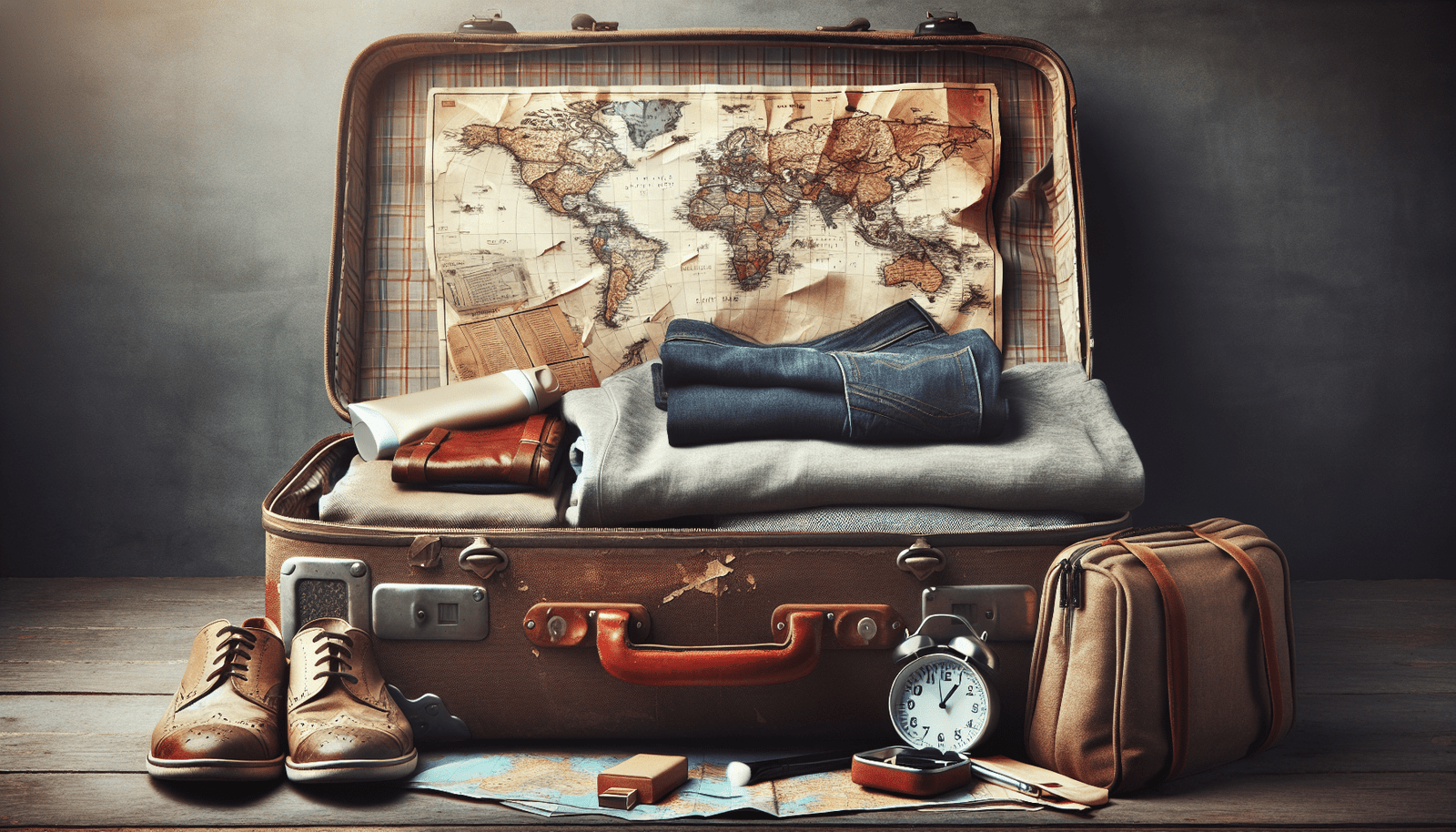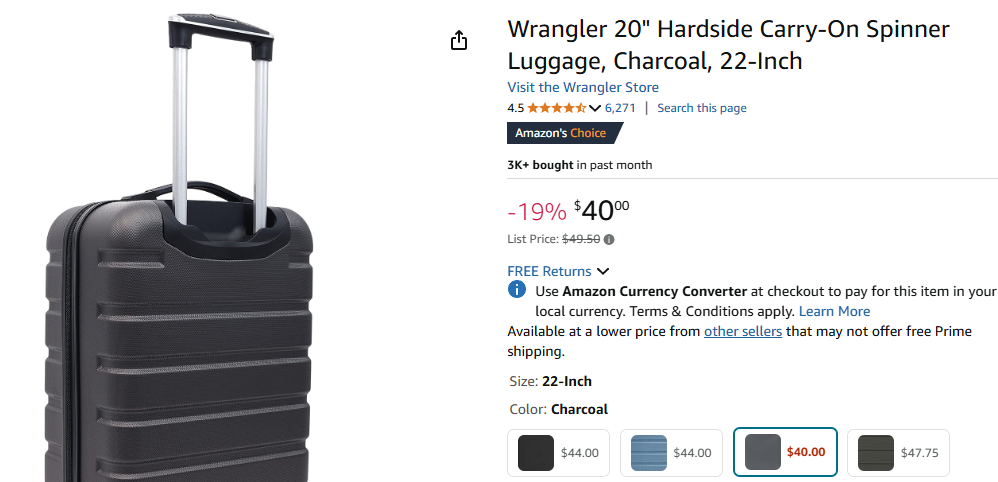Get ready to rethink your travel packing list with insights from Away Together’s Nik and Allie. This informative guide reveals 12 items that seasoned travelers no longer consider essentials. From bulky neck pillows to outdated physical guidebooks, you’ll discover how to streamline your luggage and make journeys more enjoyable. The focus is on packing only what’s truly necessary, freeing up space and lightening your load.
As you explore these minimalist packing tips, you’ll also learn practical alternatives and strategies to enhance your travels. Imagine swapping cumbersome travel hair dryers for those provided by hotels, or opting for digital guides over their hefty paper counterparts. There’s advice on carrying just the right amount of cash and choosing versatile clothing over excessive outfits. These tips not only simplify packing but also enrich your travel experiences, ensuring you focus on the moments that matter most.

This image is property of i.ytimg.com.
Bulky Neck Pillows
Why They’re a Pain: They’re awkward and take up valuable space.
Ah, the trusty neck pillow. A classic staple in many travelers’ bags, promising comfort on long flights or train rides. However, if you’ve ever had to squeeze one into your already packed carry-on, you know they can be a real nuisance. These bulky cushions often take up more space than they’re worth and mostly end up hanging off your luggage or stuffed into a corner, only to be used for a few hours. Plus, during the rest of your trip, they often remain neglected, taking up valuable space that could be used for other essentials. In reality, lugging around a big neck pillow isn’t the most efficient choice for smart travelers.
What to Use Instead: A scarf or a compact inflatable pillow can do the trick.
Instead of a traditional neck pillow, consider packing a scarf or an inflatable pillow. A scarf can double as a fashion accessory and can be easily used for neck support by wrapping it in a way that offers similar comfort. An inflatable pillow is another great alternative as it packs down into a fraction of the space and can be easily adjusted to your comfort level. These options take up minimal space and still provide you with the neck support you need on the go.
Physical Travel Guidebooks
The Digital Alternative: Apps and e-guides are lighter and up-to-date.
There’s something nostalgic about flipping through a well-worn guidebook. However, in the era of smartphones and constant connectivity, those hefty tomes are becoming obsolete. Modern travelers can access the same information—and more—directly from their phones through apps and e-guides. These digital resources are not only lighter but are also frequently updated, ensuring you’re getting the most current information about your destination. Google Maps, TripAdvisor, and even digital versions of popular guidebooks like Lonely Planet make it easy to navigate and explore with just a few taps.
Saving Space: Gets rid of unnecessary paper weight in your bag.
Opting for digital guides means freeing up space in your luggage. Physical books, with their copies of pages and hardcovers, add unnecessary weight. By switching to electronic versions, you’ll save space and have more room for essential items, without losing any of the convenience or information.
Travel Hair Dryers
Available Alternatives: Hotels and Airbnbs nearly always provide these.
If you have ever packed a travel hair dryer, you know that they can be small but still take up considerable room. Luckily, most hotels, and even a majority of Airbnb rentals, come equipped with hair dryers in the bathroom. Unless you’re staying somewhere incredibly off-the-grid, it’s best to leave the hair dryer at home and trust in your accommodation’s amenities.
When to Consider Packing One: Only if you’re heading to remote areas without such amenities.
There are exceptions, of course. If your travels are taking you into remote or rural areas where accommodations might not come with all the typical amenities, you might want to consider packing a lightweight travel hair dryer. But these situations are relatively rare, and in most cases, it’s one less thing you need to pack.
Excessive Cash
The Risk Factor: Carrying lots of cash is a security risk.
Traveling with large amounts of cash can pose a security risk, making you a potential target for theft. Not only is there the risk of losing it, but also the challenge of keeping it secure throughout your trip. The days when you needed to carry a wallet filled with cash are long gone, thanks to the advancement of digital payment options.
Better Options: Use cards or ATM withdrawals with no international fees.
For ease and safety, carry a couple of credit or debit cards—preferably ones with no international fees. Many cards also offer rewards on travel purchases which can be an added bonus. ATMs are widely available in most countries, so you can withdraw small amounts of cash as needed, rather than toting a large sum all at once. This, combined with the security of electronic payments, means you can travel lighter and safer.

Full-Sized Toiletries
The Bulky Truth: Full-sized bottles eat up luggage space and weight limits.
Packing toiletries in full-sized bottles is one of the quickest ways to max out your luggage’s weight and space capacities. These often heavy and cumbersome containers are typically unnecessary for the average trip, and they can push your checked luggage over the weight limit, resulting in additional fees.
Efficient Alternatives: Travel-size or solid toiletries are the way to go.
To conserve space, opt for travel-size versions of your products, or better yet, try solid versions that come in bars, like shampoo and conditioner bars, which take up less space and eliminate the risk of leaking. This efficient solution not only fits more easily in luggage but also aligns with TSA’s regulations for carry-on liquids, making the airport security process smoother.
Technical Rugged Gear
When It’s Overkill: Unless you’re actually going hiking, leave these at home.
Packing for ‘what if’ scenarios often leads people to bring along rugged or technical gear that remains unused. Items like hiking boots, heavy-duty jackets, or camping accessories might be necessary for some travelers, but if your itinerary does not include outdoor adventures, this gear is simply overkill.
Smart Packing: Opt for versatile clothing that suits your itinerary.
Instead of packing items you’ll likely never use, bring multifunctional clothing that works for a variety of settings. Lightweight, quick-dry fabrics and layers can adapt to different climates and activities without burdening your bag. This way, you’ll be prepared for any changes in plans without being bogged down by unnecessary gear.

Luggage Scales
Why They Rarely Matter: Weigh bags at home before you leave.
A luggage scale is often an item that seems useful but tends to be underutilized. It’s easy to weigh your bag at home before departure to avoid excess fees. Most travelers find that accurately weighing bags at home is sufficient.
Exception to the Rule: Only needed if you’re buying excessive souvenirs.
The only time a luggage scale comes in handy is when you plan to shop a lot on your travels. If you anticipate buying souvenirs in abundance, it might make sense to bring one along to ensure you’re within the airline’s weight limits upon return.
Towels
Guest Lodging Provides: Hotels and rentals almost always have towels.
Packing a towel could seem like a no-brainer, but many travelers forget that most accommodations provide clean towels without request. Whether staying in a hotel or rental, you’ll likely find a stack of fresh towels waiting for you upon arrival, making it unnecessary to fill precious luggage real estate with your own.
When to Pack: Only consider for beach trips or camping.
Exceptions exist, of course. Beach trips, where you’re likely to need a towel more frequently, or camping trips, where amenities are limited, might necessitate bringing your own. For these occasions, a compact microfiber towel can be a lifesaver due to its quick-drying capabilities and minimal space consumption.
Excess Clothes
Weight Consideration: Too many clothes make the bag heavy.
Overpacking clothes is a common travel misstep, leading to cumbersome bags and excess weight. It’s tempting to prepare for every possible occasion, but the likelihood of needing multiple outfit changes each day is slim.
Capsule Wardrobe: Minimal and mix-match items for maximum versatility.
A capsule wardrobe consisting of coordinated and versatile pieces can solve this issue, enabling you to mix and match your way through the trip. By choosing clothes within a similar color palette, you maximize outfit combinations with minimal clothing. This approach keeps your packing light, allowing you to be prepared for a variety of settings without the added bulk.
Conclusion
The Smart Approach: Evaluate essentials and eliminate the excess.
Traveling light is about cutting down to the essentials. Before packing, critically assess each item’s necessity and seek alternatives that provide the same benefits without the bulk. This discerning eye will help eliminate excess baggage.
Travel Light: Focus on experiences rather than carrying loads of stuff.
The ultimate goal of traveling is the experiences. By packing only what truly enhances your journey, you’ll be able to enjoy your trip, unburdened by too much gear. Embrace a minimalist approach to packing, and set yourself up for a more peaceful and enjoyable travel experience.
Some of the links on this site are affiliate links, which means I may earn a small commission if you click on them and make a purchase, at no additional cost to you. As an Amazon Associate, I earn from qualifying purchases.

